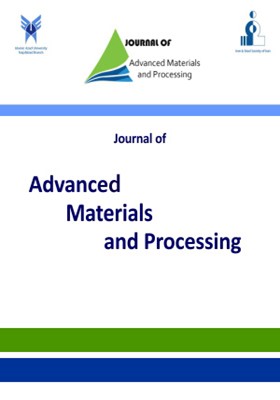Effect of Silicon Carbide and graphite additives on the pressureless Sintering mechanism and microstructural characteristics of Ultra-High Temperature ZrB2 Ceramics Composites
محورهای موضوعی : CeramicsMahdi Khoeini 1 , Mohammad Zakeri 2 , Ali Nemati 3 , Morteza Tamizifar 4 , Hamed Samadi 5
1 - Department of Materials Engineering, Science and Research Branch, Islamic Azad University, Tehran, Iran
2 - Materials and Energy Research Center, Karaj, Iran
3 - sharif university of technology
4 - Department of Metallurgy and Materials Engineering, Iran University of Science & Technology, Tehran, Iran
5 - Department of Materials Science and Engineering, Faculty of Engineering, Malayer University, Malayer, Iran
کلید واژه: Densification, Pressureless sintering, Ultra-high temperature ceramics (UHTCs), ZrB2–SiC composites, microstructural characteristics,
چکیده مقاله :
The effect of SiC content, additives, and process parameters on densification and microstructural properties of pressureless sintered ZrB2– (1–10 wt %) SiC particulate composites have been studied. The ZrB2–SiC composite powders mixed by Spex mixer with 1-2wt% C (added as graphite powder) and CMC have been cold-compacted and sintered in argon environment in the temperature range of 1800–2100ºC for 2hs. The amount of densification is found to increase with sintering duration and by prior holding at 1200-1650ºC for reduction of oxide impurities (ZrO2, B2O3 and SiO2) on powder particle surfaces via the formation of new phases such as ZrSi2 and ZrC in the system. Presence of SiC with average size smaller than that of ZrB2 appears to aid in densification by enhancing green density, increasing C content by erosion of milling media, and inhibiting matrix grain growth. Both of SiC and C appear to aid in reduction of oxide impurities. The shrinkage of samples was measured, and the microstructure of samples was examined using X-Ray Diffraction and scanning electron microscopy (SEM), equipped with EDS spectroscopy. Room temperature mechanical properties were examined. Sintering temperature has a great effect on relative density, porosity, water absorption, hardness, fracture toughness, oxidation resistance, Strength and microstructure of these composites. The highest relative density, (99.65%), was obtained in ZrB2–10wt. %SiC–2 wt. %C composites sintered at 2000ºC for 2hs.


